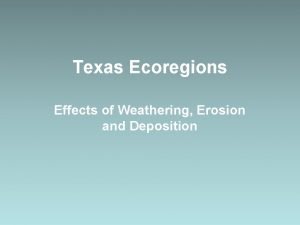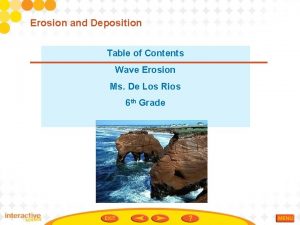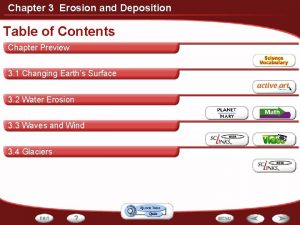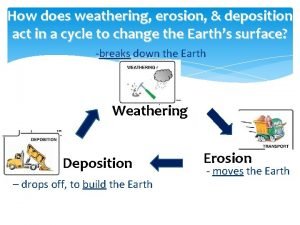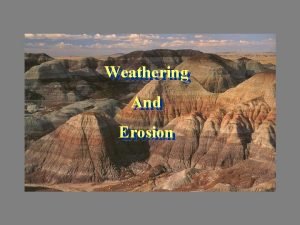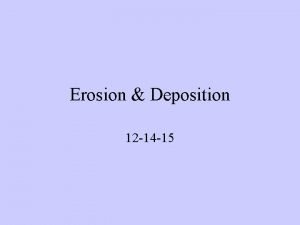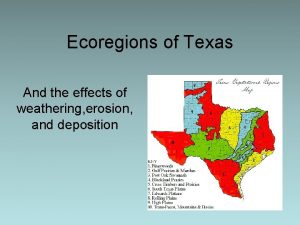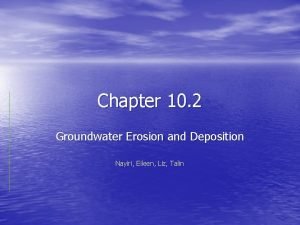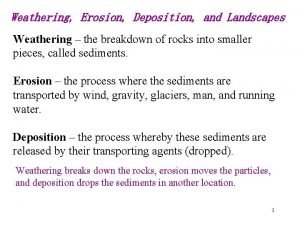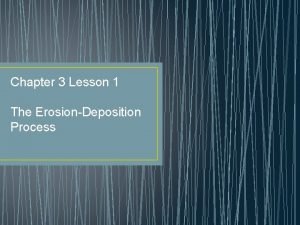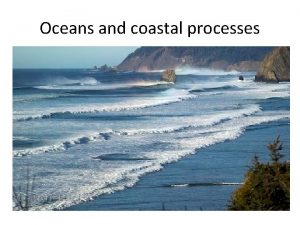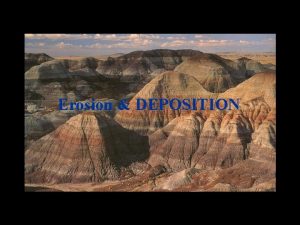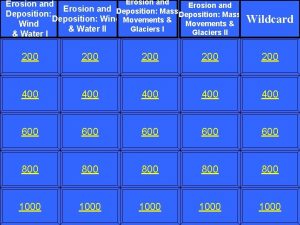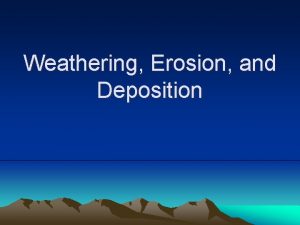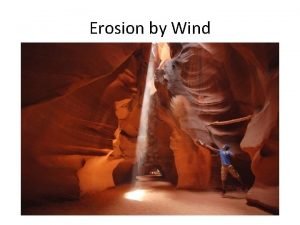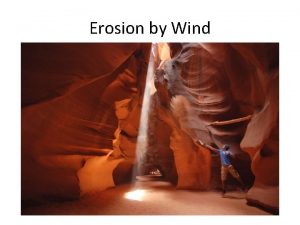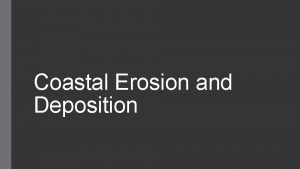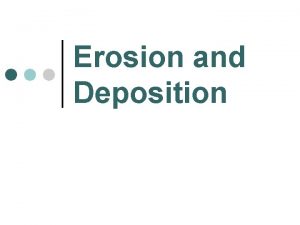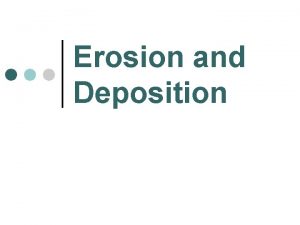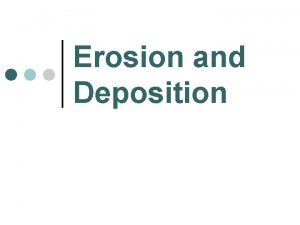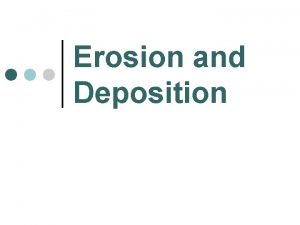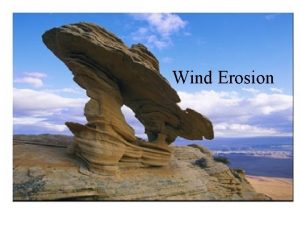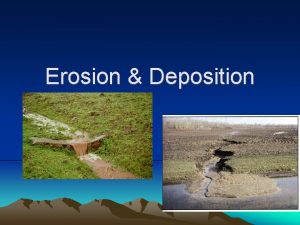Erosion and Deposition Wind Erosion How Does Wind














- Slides: 14

Erosion and Deposition Wind Erosion

How Does Wind Cause Erosion and Deposition? Wind can be a powerful force in shaping the land in areas where there are few plants to hold the soil in place. In the east African nation of Eritrea, sandstorms are common. Strong winds blowing over loose soil can reduce visibility.

Deflation Wind causes erosion mainly by deflation. Geologists define deflation as the process by which wind removes surface materials. When wind blows over the land, it picks up the smallest particles of sediment, such as clay and silt.

The stronger the wind, the larger the particles it can pick up. Slightly heavier particles, such as sand, might skip or bounce for a short distance. But sand soon falls back to the ground.

Strong winds can roll heavier sediment particles over the ground. In deserts, deflation can sometimes create an are of rock fragments called desert pavement. There, wind has blown away the smaller sediment, leaving behind rocky materials.

Abrasion by wind-carried sand can polish rock, but it causes relatively little erosion. Geologists think that most desert landforms are the result of weathering and water erosion.

Deposits by Wind All the sediment picked up by wind eventually falls to the ground. This happens when the wind slows down or an obstacle, such as a boulder or a clump of grass, traps the windblown sand sediment. Wind erosion and deposition may form sand dunes and loess deposits.

When the wind meets an obstacle, the result is usually a deposit of windblown sand called a sand dune. The shape of sand dunes is determined by the direction of the wind, the amount of sand, and the presence of plants.

Sand Dunes You can see sand dunes on beaches and in deserts where wind-blown sediment has built up. Sand dunes come in many shapes and sizes. Some are long, with parallel ridges, while others are U-shaped.

They can also be very small or very large. Some sand dunes in China are 500 meters high. Sand dunes move over time.

Little by little, the sand shifts with the wind from one side of the dune to the other. Sometimes plants begin growing on a dune. Plant roots can help to anchor the dune in one place.

Loess Deposits Sediment that is smaller than sand, such as particles of clay and silt, is dropped far from its source in large deposits. This fine, wind-deposited sediment is loess.

There are large loess deposits in central China and in states such as Nebraska, South Dakota, Iowa, Missouri, and Illinois. Loess helps to form fertile soil. Many areas with thick loess deposits are valuable farmlands.

Desert Pavement Lab Homework is pages 232 -235
 Weathering in edwards plateau
Weathering in edwards plateau Post oak savannah weathering erosion and deposition
Post oak savannah weathering erosion and deposition Deposition in blackland prairies
Deposition in blackland prairies How do waves cause erosion and deposition
How do waves cause erosion and deposition The term geologists use for underground water is
The term geologists use for underground water is Weathering erosion and deposition
Weathering erosion and deposition Types of weathering
Types of weathering Agents of erosion
Agents of erosion Diagram of erosion and deposition
Diagram of erosion and deposition South texas plains weathering
South texas plains weathering Groundwater erosion and deposition
Groundwater erosion and deposition Pictures of different agents of soil erosion
Pictures of different agents of soil erosion The laying down or settling of eroded material.
The laying down or settling of eroded material. Rill erosion
Rill erosion Jetties
Jetties

